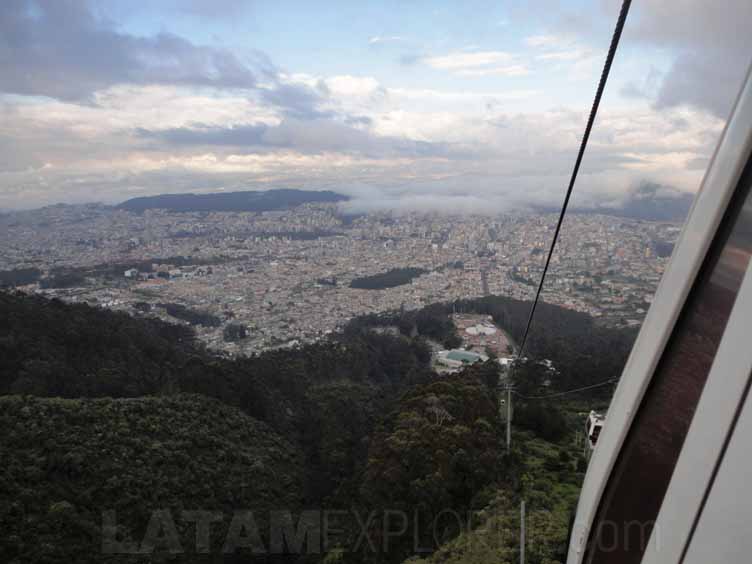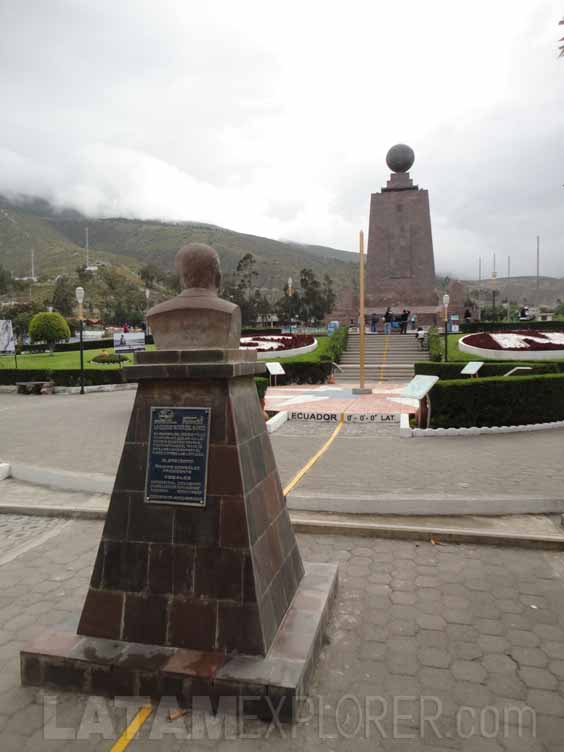Home > Destinations > Ecuador > Quito
Quito
Located practically "in the middle of the world", just a few miles south of the Equator, Quito was the first Latin American city to be awarded World Heritage Site status by UNESCO. Founded in 1534 by Spanish conquistador Diego de Almagro on territory originally ruled by the Kingdom of Quito and absorbed by the Inca Empire in the later part of the 15th century, the city hosts a very well preserved historic center, full of architectural marvels dating back to the colonial era.

As in many other places throughout the Spanish America, religion has always been a dominant cultural aspect in Quito. Hardly ever, however, such a well preserved evidence of how life in the early stages of the colony effectively gravitated around Catholicism can be found. The first large churches were built still in the 16th century: San Francisco (currently the largest religious building in the city), San Agustín and Santo Domingo, besides the Cathedral, all date from that time. The García Moreno street (which was known as "the street of the Seven Crosses" back in the day), located in the heart of the historic center, has, in just a few blocks, seven churches belonging to seven different congregations.

Quito is occasionally referred to as "the Reliquary of the Americas", thanks to the riches of its colonial heritage. Nowhere else is this richness more evident than at the Church of the Society of Jesus. Also known as "the Temple of Salomon in South America", the "best Jesuit temple in the world" and as the "jewel of the Baroque in the Americas and in the world", construction of this church started in 1605. It features a facade sculpted in volcanic rock and an interior filled with altars, pulpits and sculptures all made of cedar wood covered with 23-karat gold leafs.

Besides visiting several churches, the historic center is also a great place to walk through a nice variety of restaurants and cafes, permeated by a series of museums, like the City Museum (Museo de la Ciudad). Calle de la Ronda, next to the City Museum, is a particularly pleasant place to be: recently renovated, this small cobblestone street plays host to a number of events every weekend. If you happen to be around on a Monday, try not to miss the changing of the guard in front of the presidential palace (Palacio de Carondelet) before leaving the area.

The area north of the historic center offers the best touristic infrastructure of the city in terms of accommodation and restaurants. The focal point of this offer is found around Foch Square (Plaza Foch), the heart of Quito's "Pink Zone": synonym of party and night life in the Ecuadorian capital. The not-as-touristy Santa Clara Municipal Market, just under a mile west of Foch Square, offers local delicacies at extremely convenient prices, although its neighborhood is probably best avoided after hours. This is also the area where the celebrated Museo Nacional de la Casa de la Cultura (National Museum) is located. This is a complete and well organized museum focusing on Colonial and Pre-Columbian art and requires, at least, a couple of hours of the visitor's time (reopening scheduled for the 2nd half of 2017, following a 2 years renovation).
Immediately south from the historic centre you will find the Virgin of Panecillo. This image of a winged Virgin Mary is located atop the Panecillo Hill and can be seen from many places throughout the city. Views from up there offer a very nice perspective over Quito. For a much more embracing view of this 2.6 million people city, which is the highest official capital in the world - at 2,850m (9,350ft) above the sea level - it is absolutely worth it taking the gondola up the east bank of the Pichincha volcano, reaching an altitude of 4,100m (13,450ft). In either case, whenever visiting the Panecillo Hill or heading to the Pichincha lift station, or when moving through even short distances at night, it's widely recommended to take a cab.

The Middle of the World monument is located only 30km (19mi) north of Quito's historic center, in the same place where a French expedition from 1736 declared that the imaginary line dividing the Earth's south and north hemispheres passed through. Recent measurements using GPS, however, proved that the correct place for Latitude 0 is located 240m (260yd) north of the monument, in the exact place where ruins from the Quitu-Cara culture marking the spot were found. Nevertheless, the current monument is one of the main tourist attractions in Ecuador and is visited by countless sightseers avid for having a picture taken with a foot in each side of the globe.

Those interested in adding an adventurous touch to their vacations will probably feel attracted to the Cotopaxi. The second highest peak in Ecuador (following the Chimborazo) is located a mere 50km (30mi) south of Quito. This is an active volcano which erupted more than 50 times in the past 300 years, turned into a relatively popular day trip near the capital. A road (ideally for 4 wheel-drive vehicles) reaches the parking lot located 4,600m (15,090ft) high. From there it is possible to walk to the José Rivas refuge, at 4,864m (15,960ft), in about an hour. Those interested in reaching the summit, at an altitude of 5,897m (19,347ft), will usually leave the refuge before 1am, in order to begin descending from the peak at 7:30am at the latest. This is a difficult but not a technical climb.

The Mariscal Sucre International Airport is located 40km (25mi) away from the city center and offers good connections to several Latin American destinations, such as Lima, Bogotá, Panama City and Mexico City. Quito is also connected, to a lesser extent, to destinations in the United States and in Europe. The cities of Cuenca (450km, or 280mi, away) and Guayaquil (420km, or 260mi) can be reached in about 1h by plane or 8h by bus. The city of Baños, gateway to the Ecuadorian Amazon, lies 200km (125mi) from Quito and can be reached by bus in about 4 hours.








